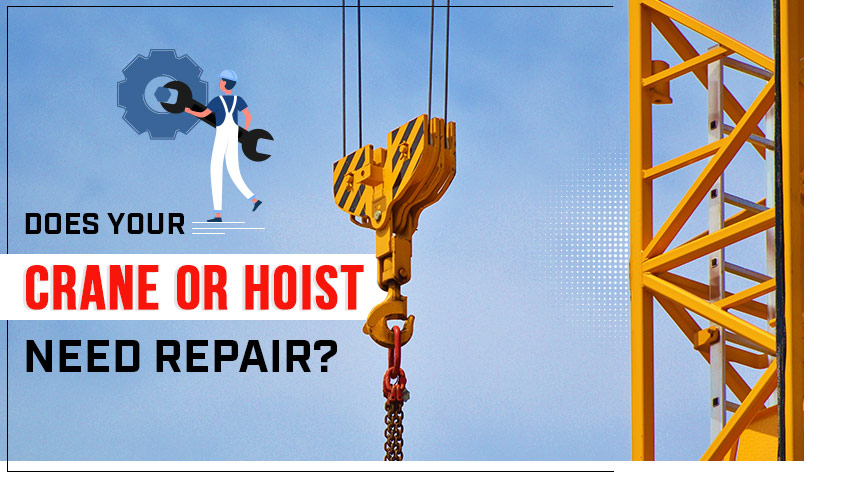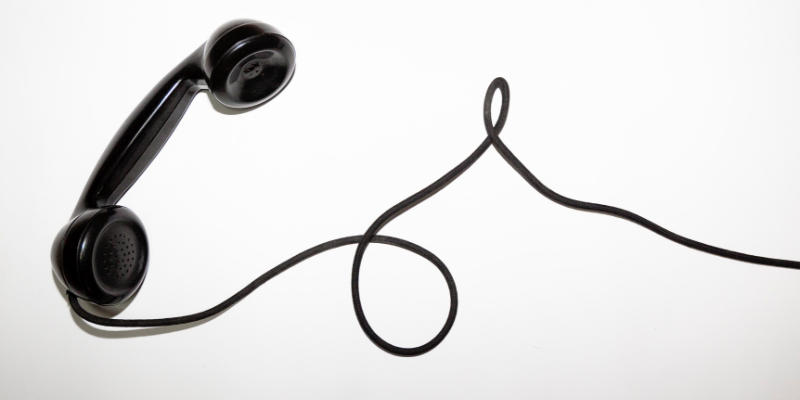Does Your Crane or Hoist Need Repair?

Cranes and Hoist Systems
Crane operations are an integral part of numerous commercial and industrial operations. They provide a reliable and efficient method for lifting and transporting heavy loads. However, the smooth functioning of a crane relies on several factors, including the proper functioning of the motor and hoist mechanism.
When a crane motor or hoist mechanism fails, the consequences can be severe. And the disruption caused by such malfunctions can result in costly downtime, lost production, and potential safety hazards. Furthermore, the inability to move heavy loads to their intended destinations can result in delayed shipments, missed deadlines, and unsatisfied clients.
Signs That Your Crane or Hoist Needs Repair
Cranes and hoists are essential for lifting and transporting heavy loads in various industries. These machines need to be in optimal working condition to ensure the safety of workers and operational efficiency. Regular maintenance and inspection of cranes and hoists can help identify signs that indicate repair or replacement is necessary. Here are several signs that you need to make crane repairs:
1. Corrosion
Cranes and hoists that are exposed to harsh weather conditions, chemicals, or saltwater are susceptible to corrosion. Corrosion can weaken the machine’s structure, leading to potential safety hazards.
2. Bent or Cracked Hooks
Bent or cracked hooks can occur due to overloading, wear, and tear, or impact damage. These defects can cause the load to slip or fall, resulting in property damage or worker injury.
3. Dry Ropes and Slings
Ropes and slings that are dry, stiff, or frayed can cause friction and damage to the crane’s moving parts. Dry ropes and slings are also more susceptible to snapping or breaking, resulting in a hazardous situation.
4. Continued Failure
If a crane or hoist frequently breaks down or fails to perform correctly, it may be time for repair or replacement. Continued failure can lead to costly downtime and loss of productivity.
5. Shiny Surfaces
Shiny surfaces on hooks, ropes, or slings indicate that they have been stretched and are nearing the end of their useful life. It is essential to replace them to prevent potential accidents.
6. Worn Pads
Worn brake pads can result in reduced braking performance and longer stopping distances, which can be hazardous. Regular inspection and replacement of worn brake pads are crucial for maintaining the crane’s safety.
7. Bent Hooks
Bent hooks can occur due to overloading or accidental impact, resulting in a hazardous situation. Bent hooks should be repaired or replaced immediately to prevent potential accidents.
8. Cracked or Loose Parts
Cracked or loose parts on a crane can cause malfunctions or failure, resulting in hazardous conditions. Regular inspection and repair of these parts are crucial to prevent potential accidents.
9. Worn Brakes and Clutch
Worn brakes and clutch can cause the crane to move uncontrollably, leading to accidents. Regular inspection and replacement of worn brakes and clutch are essential for maintaining the crane’s safety.
Preventing Crane or Hoist Problems
Regular maintenance is critical to prevent crane and hoist problems. A crane or hoist that is not maintained regularly is more likely to develop problems that can lead to accidents or breakdowns. Therefore, maintenance should include regular inspections of the crane or hoist components, including the hoist chain, wire ropes, and brakes. Any issues identified during inspections should be addressed promptly to prevent further damage.
The motor is one of the most critical components of a crane or hoist. It is essential to ensure that the motor is adequately maintained and repaired as needed. If the motor is not functioning correctly, it can cause the crane or hoist to fail, leading to accidents and injuries. Crane motor repair should only be performed by trained professionals knowledgeable about the specific type of motor used in the crane or hoist. In many cases, you’ll want to connect with a licensed crane maintenance service like AES.
Another critical aspect of crane and hoist safety is proper training. Anyone who operates or works around cranes or hoists should receive proper training on their safe use and operation. This training should include understanding the equipment’s limitations, such as weight capacity and proper use of the controls. Proper training can help prevent accidents and injuries caused by operator error.
Additionally, following all safety procedures and guidelines when using a crane or hoist is critical. This includes utilizing proper rigging techniques and equipment, inspecting loads for stability, and ensuring the crane or hoist is not overloaded. Failure to follow these safety procedures can lead to accidents and injuries.
Need Assistance with Crane and Hoist Repair? AES Can Help!
AES is committed to offering high-quality repairs for a wide range of equipment. From cranes to industrial-grade machinery, our specialists have the expertise to deliver real results.
We specialize in crane motor repair services and have a dedicated machine service team specifically trained in handling extensive mechanical maintenance. Additionally, we back our work up with a 24-month limited warranty on all repairs.
So, if you’re looking for crane repairs, call AES at 866-386-1001 and let our experts help you find the perfect solution!






